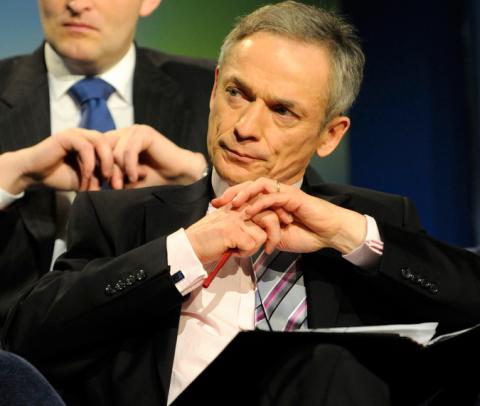Working our way into the poorhouse

Though Richard Bruton uses the word “reform”, the reality is that the Government's legislation on Joint Labour Committees is intended to achieve a reduction in overall wage levels. By Michael Taft.
As the Joint Labour Committees legislation wends its way through the Dáil – a bill that will lead to less protection for workers in many low-paid sectors – it is timely to look at the growth in deprivation for an increasing number in the workforce; namely the low-paid. The CSO defines deprivation by reference to eleven categories:
Two pairs of strong shoes · warm waterproof overcoat · Buy new (not second-hand) clothes · Eat a meal with meat, chicken, fish (or vegetarian equivalent) every second day · Have a roast joint or its equivalent once a week · Had to go without heating during the last year through lack of money · Keep the home adequately warm · Buy presents for family or friends at least once a year · Replace any worn out furniture · Have family or friends for a drink or meal once a month · Have a morning, afternoon or evening out in the last fortnight for entertainment
If someone is unable to afford two or more the above, then they are classified in the deprivation rate.
So what is the deprivation rate for those at work? 12.5%. One-in-eight in employment suffered two or more deprivation experiences during 2010. That is a significant number, which has grown considerably since the crisis began. In 2008 only 6.6% of those at work suffered deprivation, increasing to 7.9% in 2009. So the jump to 12.5% is significant.
We should expect another significant jump in 2012 given the fall in personal income, regressive tax increases in Budget 2012 and the rise in arrears.
But this doesn’t tell the full story. For those households where there is only one person working, the deprivation rate is actually higher than the national average. But the fact that even the deprivation rate touches 10% among two-income households should alert us to this social crisis.

A number of factors have contributed to rising deprivation in working households: falling wages, shorter working hours, increased taxation and charges, rising arrears. These are factors that are likely to continue and, in some cases, accelerate over the years ahead.
This is the backdrop of the Government’s legislation on Joint Labour Committees. Though the Minister uses the word “reform”, the reality is that his proposals are intended to achieve a wage devaluation – a reduction in overall wage levels. This will bring further downward pressure on the low-paid, who are already facing rising deprivation levels.
Let’s bottom-line this: if anyone thinks that driving more people into deprivation – whether in work or on social protection – will further economic recovery and fiscal stability, they should lie down in a dark windowless basement until that thought passes. Rising deprivation puts strains on social services, in-work productivity, and the Exchequer (the Government loses revenue every time wages are cut). Rising deprivation is a terrible burden for a society to carry – socially and economically.
Of course, alternatives are not allowed to be aired (or if they are, they are ridiculed): increase wages, reverse tax increases on the low-paid, provide more in-work social protection supports, give workers more rights in the workplace (right to collective bargaining, strengthen and extend Joint Labour Committees), etc. Such policy prescriptions are little short of heresy in the current debate.
But until we understand that people’s living standards – in particular, the low-paid – are not the problem but an indispensable part of the solution, we will continue to see the deprivation graph rise. {jathumbnailoff}
